The Essential Guide to Equipment by Wedding Photographer
The Importance of the Right Equipment for a Wedding Photographer
In my 20 years as a wedding photographer, I’ve come to appreciate the value of having the right equipment. It’s often said that a good photographer can make a good photograph using any camera. While this might be true in some scenarios, like travel photography, when you’re suddenly presented with a great location and superb light an active object, and a phone in your back pocket, just snap it and the image looks great. But wedding photography is different – call it an art or call it a job, but at the end of the day you have to come home having done the best you could, having taken every opportunity the day has presented and the right tools are essential for materializing that.

Equipment – more than just tools in Wedding Photography
As a wedding photographer, you’re tasked with capturing irreplaceable moments. Well, that’s at least how I work – I look for spontaneity in the moment, as I believe that’s when you play the least and that’s a core of my photography style. Yes, I’ve shot elopements together with a Chinese video crew – they made the couple walk up and down the aisle 4 times – I understand that gives you more material to work with, but to me, true magic happens once, and that’s the first time. This is why equipment is so important to me – cameras “extend my hands” and lenses “extend my eyes”
This article isn’t just for seasoned pros, it’s especially useful for those just starting out in wedding photography. I’m here to share my perspective on what equipment matters and why. While I’m not here to tell you what to buy, I hope my experience as a wedding photographer sheds light on what you might need to consider as you start your own journey in this field.
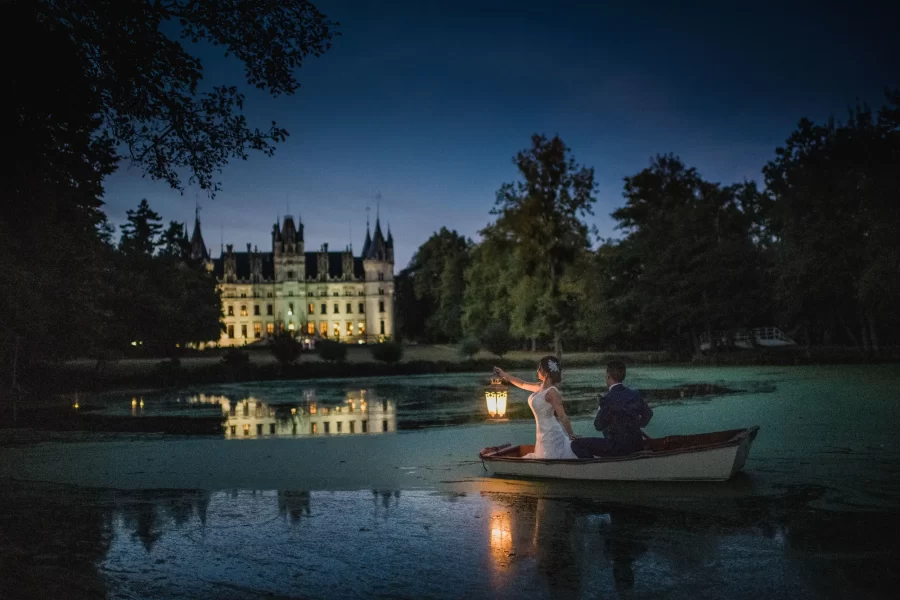
Cameras I’ve worked with
My journey through the world of wedding photography cameras started 25 years ago, not as a photographer, but working at a Canon camera shop. This experience naturally influenced my first camera choice – it was a Canon.
Canon
My first digital SLR was a Canon EOS 20d – crop sensor, 3 lenses, the only thing I could afford and I worked all right with it for a year or two. Then the 5d came out, full frame, and the files were amazing, so naturally I had to have it. Added the Kit L glass and a 70-200 – I was on fire:) Then I got my hands on an EOS 1Ds MK II followed by an EOS 1ds MK III – both exceptional cameras for the day. That’s when I truly learned that cameras are not only about a spec sheet – I mean, the 1 series was totally from a different league – the handling, the snappyness, it’s just something that’s ready to shoot.

Nikon
Nikon announced the D3 – 14bit NEF files, 10 shots a second, usable ISO 6400 – all this was new to the world, also a simple feature like Auto ISO – it was particularly useful and I still have this on on my cameras – one second you’re shooting inside the church at iso 3200 or up, the next moment you’re outside and shooting at ISO 100, it’s something useful and as I said, still use it now. Then bought a D3s followed by a pair of d4 – somewhat insignificant cameras in camera history, but proper workhorses that lasted for years.
Then intrigued by a new sensor technology and lots of megapixels bought a pair of D850 – great camera for weddings, exceptional files in daylight, beautiful viewfinder, but files were a bit heavy and operation felt sluggish compared to a d4, I used this camera at up to ISO 20 000, yes, it was grainy, but still usable. So I worked with them for several years.
Then mirrorless came by – I changed one d850 to a Z6II. Worked for a year and understood that it was a mistake – while the Z6II delivered cleaner files at high ISO, it fell short in terms of responsiveness and focus accuracy, especially in the dark – this led me back to an older, yet reliable Nikon D5 – a camera that excels in focus accuracy, battery life, general speed, and high ISO performance. Yes, it has only 20 mpix, but still, this is my workhorse now.
Recently I’ve added the Nikon Z8 to my arsenal. It’s a complex camera with many features, half of which I’ll never need, then again, it’s a highly versatile camera, there are things I don’t need but someone else will. Here’s my initial review of the Z8.

Choosing the right tools – my current gear
In the ever-evolving world of photography equipment, I’ve found my sweet spot with the Nikon D5 and the Nikon Z8. Each of these cameras serves a unique purpose in my workflow, catering to the diverse and demanding scenarios of wedding photography.
The Nikon D5 – a workhorse for challenging conditions
The Nikon D5, though considered an older model, is a cornerstone of my photography gear. Its design, originally intended for sports and journalistic work, makes it an ideal fit for the fast-paced and unpredictable nature of weddings. Here’s why the D5 is indispensable to me:
1. Responsiveness: In wedding photography, speed is crucial. The D5’s ability to shoot fast and reliably is a game-changer, especially when working alongside videographers who can attest to its speed.
2. Low Light Performance: With a 20 MP sensor, the D5 strikes a balance between resolution and low-light capability. I recently covered an event in a dimly lit room without the use of flash, and the D5 performed exceptionally at ISO 20,000, capturing sharp images with a 24-70 2.8 lens.
3. Focus Accuracy in the Dark: The D5’s ability to lock focus on moving, low-contrast subjects in challenging lighting conditions – say, people, having a discussion in a candle or weak LED-lit room.
4. Battery Life: Its impressive battery life, giving about 6000 shots per charge, means I can cover multiple weddings without worrying about recharging.
5. Weight and Stability: The weight of the D5 contributes to the stability of shots. While it’s heavier and can be tiring, the weight aids in reducing camera shake, resulting in sharper images.
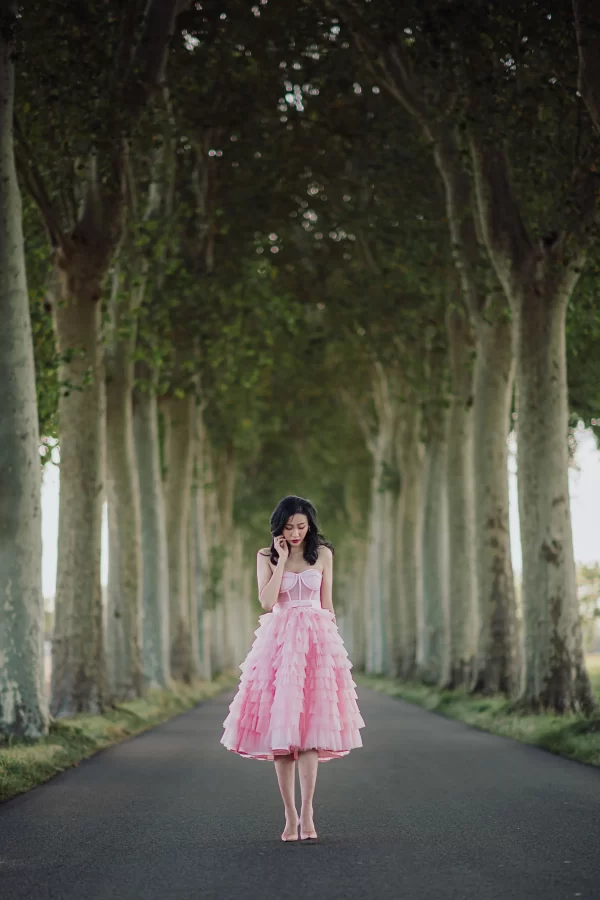
The Nikon Z8: For Special Projects and High-Resolution Needs
The Nikon Z8, a contrast to the D5, brings its strengths to the table:
1. High Resolution: At 45 MP, the Z8 delivers exceptional file quality, suitable for projects where detail is needed.
2. Electronic Shutter and Silent Shooting: These features make the Z8 ideal for my “moving images” project, reducing wear on the mechanical shutter. Also, it was last week when a client asked me – why is your camera so loud? I had the D5 – since the brief was – no flash and Christmas-themed dinner.
3. Eye Focus: This is particularly useful in capturing the emotion and intimacy of wedding moments. Not that it’s something that was discovered yesterday, but now Nikon has something working in this regard. Sometimes it works too well, picking up “random” eyes. I mean, eyes, that are not meant to be in focus.
4. Lightweight and Digital Viewfinder: While it lacks the snappiness of the D5, the Z8’s mirrorless design offers a different shooting experience, like with the EVF – sometimes you can see more through it than with an optical viewfinder, I mean in the dark, and also have a live histogram on it – can be beneficial in certain situations. The one I use the most is for macro shots of, say, an engagement ring – articulate the LCD, 10x zoom on the viewfinder, focus peaking and you have the rock perfectly sharp.
I’m curious to see the durability of the Nikon Z8 – since its only moving parts are the few scrolling wheels, and the image stabilizer – I’ve got a strong hunch that this camera will last for ages. Let’s work with it and see. Then again, as I’ve said before – I’ve never had a Nikon camera that just malfunctioned, there are two that I dropped though.
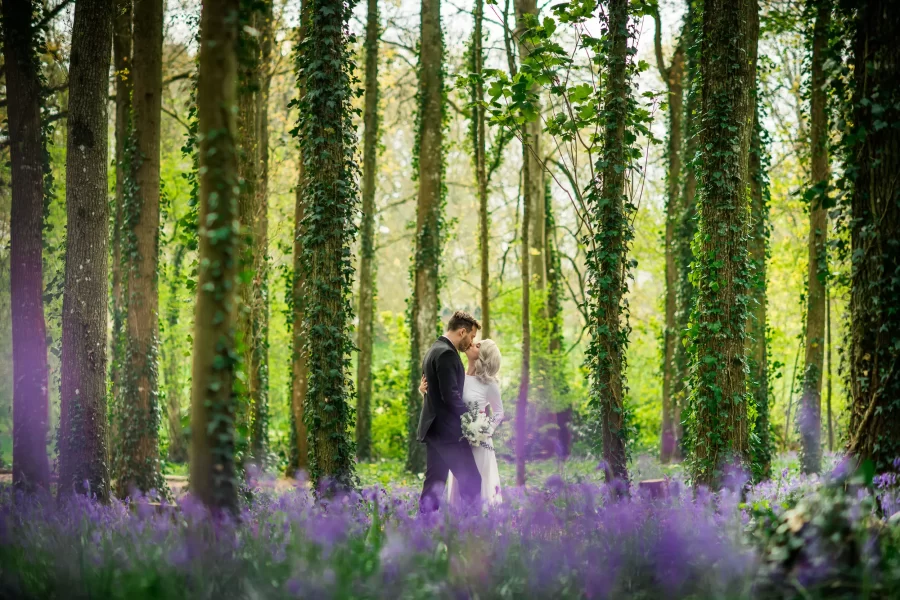
Exploring Medium Format: A Consideration for the Future
I’ve dabbled with medium-format digital cameras like the Fuji GFX 50 and 100 and even tested high-end models like the Phase One iQ180. While these cameras offer exceptional quality in controlled environments, their lack of versatility makes them less suited for my style of wedding photography. However, I’m intrigued by the color science in cameras like the Hasselblad X2D, despite its slower performance. But they are evolving, becoming more and more versatile so let’s just give them time.
Final Thoughts
Everybody shoots differently – as a wedding photographer, me, you, everyone – we’ve found our ways of shooting and to me versatility and reliability are key. Whether it’s shooting in extreme temperatures or varying light conditions, the equipment must be up to the task. My current setup with the Nikon D5 and Z8 reflects a balance of these needs, each serving a specific purpose in my diverse range of assignments.
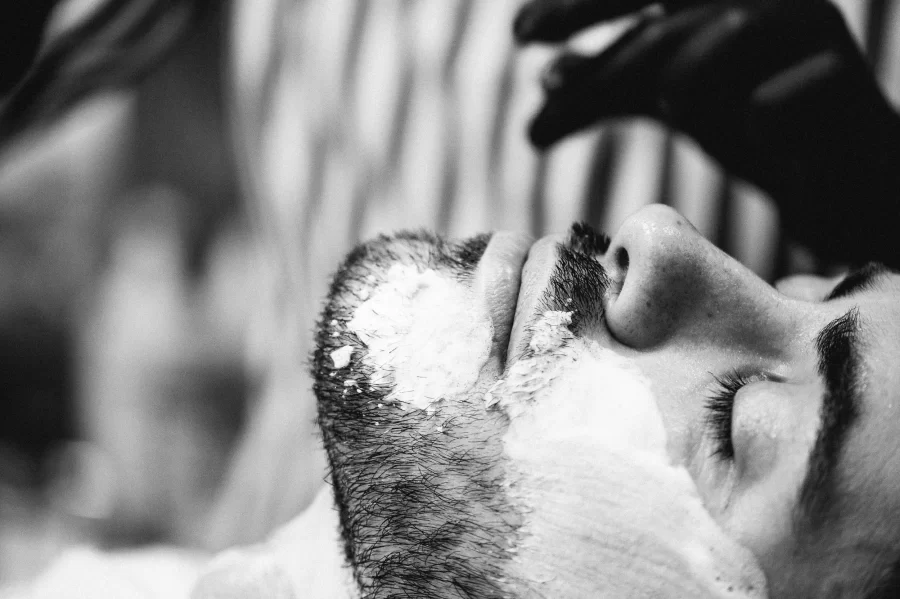
Chapter 4 – Lenses: The Eyes of a Wedding Photographer
Choosing the Right Lenses for Wedding Photography
As a wedding photographer, selecting the right lenses is as crucial as choosing the camera body. My lens kit is a carefully curated collection, each serving a specific purpose in capturing the essence of a wedding. I’ve changed my cameras quite often, but the lenses I have are the same ones that I bought 10 years ago:
The Workhorse: Nikkor 24-70mm f/2.8
The Nikkor 24-70mm f/2.8 is my go-to lens. It’s not necessarily my favorite, but it’s the one I rely on the most. Its versatility and dependable focus make it an invaluable tool in the fast-paced environment of a wedding. As I said – not the most beautiful rendering of an image, but it’s always there. Even in low light, it acquires focus quicker than fixies, so I use it a lot.
The Prime Trio: 35mm, 50mm, and 85mm f/1.4
1. 35mm f/1.4: This is my personal favorite. I prefer this focal length as it allows me to be close to people, so, when you look at photos, you feel present in the moment.
2. 50mm f/1.4: This one is a bit softer than the 35mm and 85, but its beauty is in its flaws – like when you have a backlit portrait – the light fills the frame and since it’s a softer lens, it renders the light less harsh, so for environmental portraits it’s beautiful. And it’s the lightest lens I have, so it gets its fair share of use.
3. 85mm f/1.4: this is a specialty lens primarily used for a couple of photoshoots, this lens excels in creating beautiful, soft backgrounds, especially at apertures between f/1.4 and f/2. It pairs exceptionally well with the Nikon Z8, with a nice sharp focus and creamy blur. Don’t use it as much as it deserves.
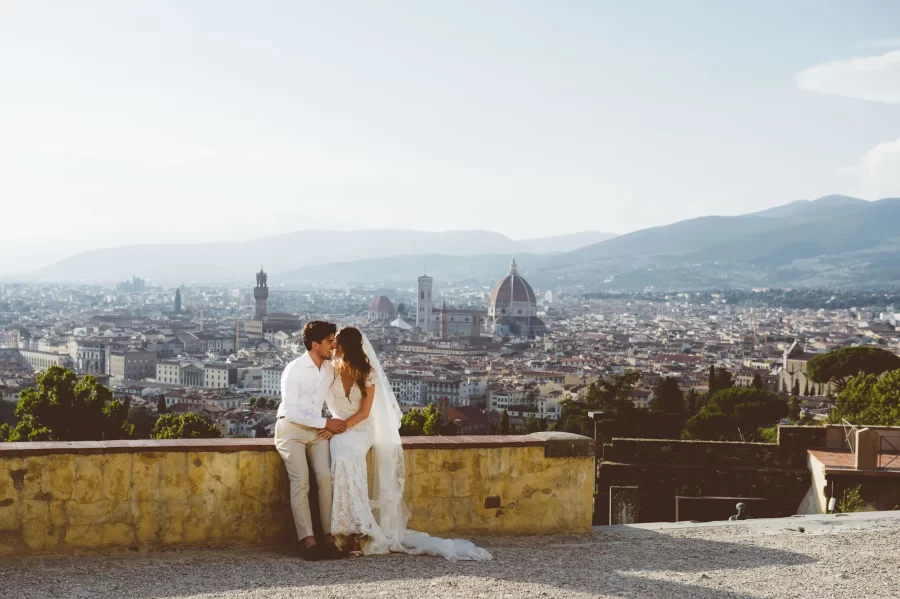
The Wide and Telephoto Range
20mm f/1.8 Nikkor: Perfect for capturing the energy on the dance floor and wide party scenes.
16-35mm f/4 Nikkor: Though not frequently used, this lens is exceptionally sharp, even wide open. I used to use it a lot on dance floors and wide setup shots, but now it’s mainly replaced by the fixed 20mm. I haven’t sold it, as it still is quite underrated for what it does.
105mm Macro: A specialty lens, excellent for capturing details like rings and decorations. Rarely use it though – I usually have a 3rd party macro ring (extension tube 7mm) with me, so I can do all the closeups with the 24-70 or 85mm. Not ideal, but lightweight.
70-200mm f/2.8: Used occasionally due to its weight. It’s great for moments when I need to capture scenes from a distance without intruding. But then again, being the official photographer at weddings allows me to freely access anything in most situations, so usually 85mm is as long as I’ll go at weddings.
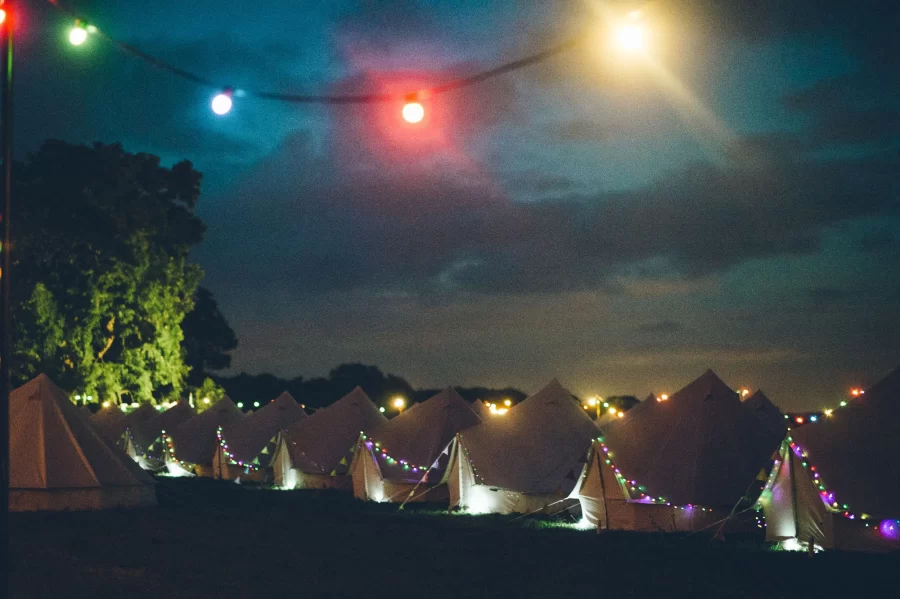
Why I Haven’t Switched to Z Glass Yet
Currently, I haven’t incorporated the new generation Z lenses into my kit for two main reasons:
1. Compatibility Issues: As I still use an F-mount body alongside a Z-mount, integrating Z lenses is cumbersome. Dealing with adapters for some lenses and not for others complicates the workflow.
2. Weight and Balance: The Z lenses, while offering certain optical advantages, are heavier and more complex due to the challenges that a shorter focal flange creates. This affects the balance of the camera lens setup, making it front-heavy, which I prefer to avoid.
Lens Selection for a Wedding
I never take all my lenses to a wedding. Typically, I carry the 24-70mm zoom and two or three primes, depending on the venue and the size of the wedding. The zoom remains on one camera, while I switch between primes as the situation demands. Sometimes, if I want to “spice it up” I take either a set of 3 fixies only or, wait for it, a 70-200 – but as I said – depends on the situation. I’ve found that photos that differ are more often made with fixies, and not due to the shallow focus but due to the restriction of the focal lens. If you are in a situation, have a camera with a 50mm and there is a moment you have to take a photo of. you will frame/compose with the limits of the fixed lens. If you had the zoom on your camera in a given situation – you would have zoomed in/out for the moment to fit your frame perfectly – and inevitably your photos will look kind of the same. Sometimes the beauty is in the imperfection.
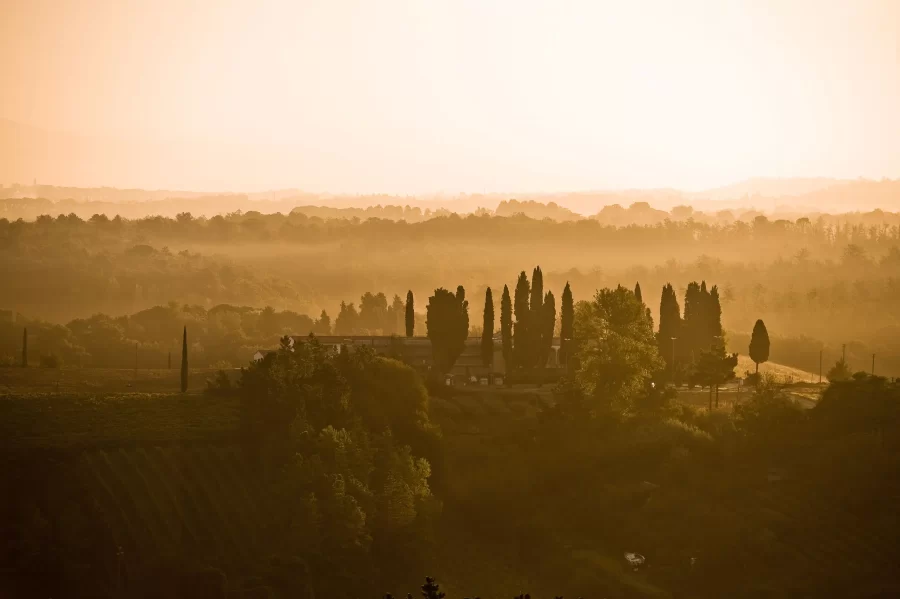
Chapter 5: My Approach to Lighting in Wedding Photography
In my wedding photography, I aim to capture the natural ambiance of the event. My style leans heavily towards using available light, as I believe that adding artificial light usually interferes with the true atmosphere of the wedding. However, there are moments where a bit of additional lighting is necessary.
The LED Light Panel: For Subtle Enhancements
My primary tool for supplemental lighting is an LED light panel. This piece of equipment shines when the natural light is just a bit too dim. The LED panel allows me to see exactly how the added light will affect the scene, I can adjust the color temperature, so I can take the shot without ruining the ambiance.
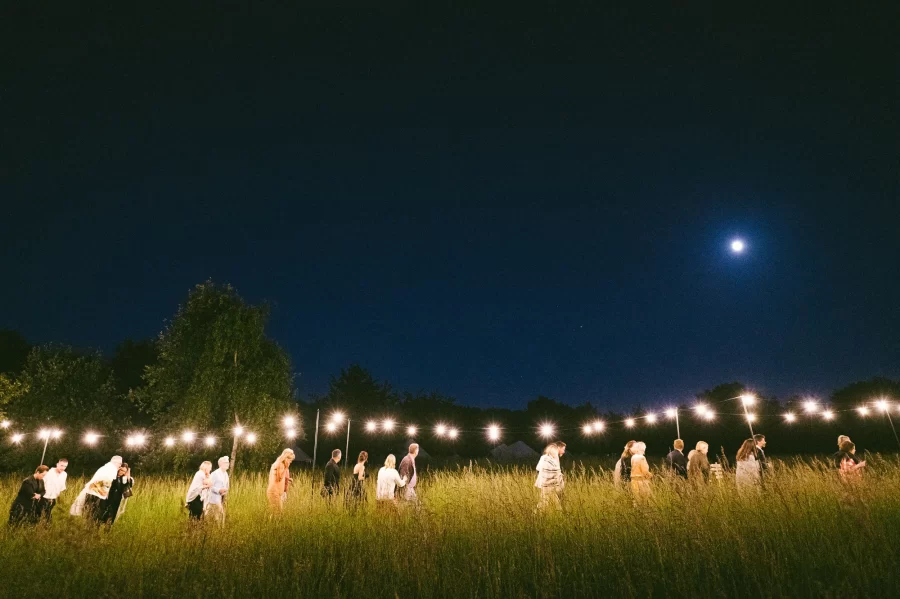
The Flash: Dance Floor Dynamics
For dance floor photography, where the environment is often filled with effects like the smoke machine I use a Nikon SB 700 flash. The flash I often use to shoot straight in the face, to cut through all the smoke and capture the energy of the moment. I’ve found the SB 700 to be more reliable than its peers in the 900 series, which I had issues with in the past.

The Godox ML60: A Touch for Pre-Wedding Shoots
Recently, I’ve added a Godox ML60 light to my kit. This light I use for pre-wedding photoshoots. It’s quite bright and adds a touch that appeals to my Chinese clientele. The ML60 operates on two large Sony camcorder batteries, making it a versatile and powerful addition for specific lighting needs and quite a big power bank, when the phone is about to die at the airport.
Balancing Natural and Artificial Light
My philosophy with lighting is to use it sparingly and only when necessary. Whether it’s a subtle fill with the LED panel or a direct flash on the dance floor, the goal is always to complement the existing light, not to overshadow it. This approach ensures that the photos retain the authentic feel of the wedding while still being visually stunning.
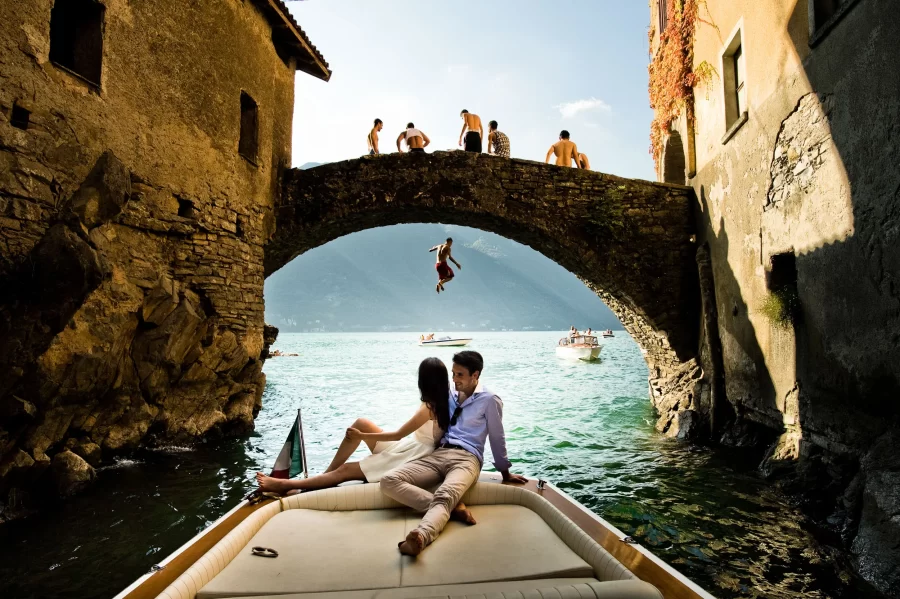
Chapter 6: My Approach to Support Equipment in Wedding Photography
In wedding photography, the support equipment I choose plays a crucial role in how I navigate and capture the day. Over the years, my approach has evolved, favoring mobility and efficiency.
Tripods and Monopods: Less is More
My philosophy with tripods has changed significantly over time. I remember lugging a Manfrotto 055 pro to a wedding in Canada in 2010, only to return with it unused. I said “F** it, never again”
However, there are exceptions. Occasionally, I like to capture a venue under a starry, moonless night sky, which requires the stability of a tripod. For these rare instances, I use a compact Sirui carbon fiber tripod. It’s lightweight and can barely hold a camera with a 24-70 lens, so it only accompanies me on specific assignments, typically 2-3 weddings a year where I travel with a suitcase.
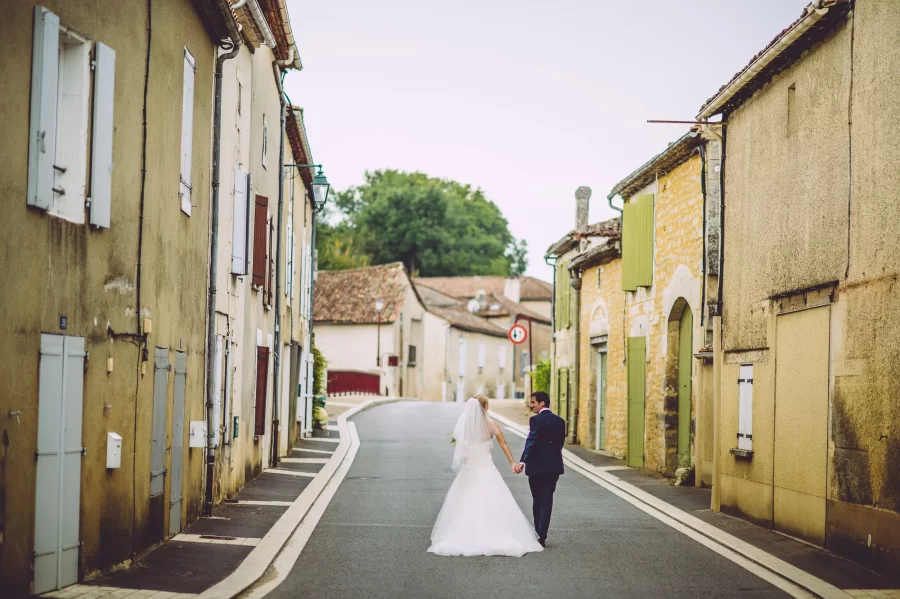
Bags: Think Tank Roller and Wotancraft Shoulder Bag
Choosing the right bag is essential for a wedding photographer. I have two main bags: a Think Tank roller and a Vanguard Heralder shoulder bag. Each serves a different purpose:
1. Vanguard “the heralder” Shoulder Bag: This is my go-to for pre-wedding shoots, especially in dynamic urban settings like Paris, London, or the stair-laden paths of Santorini. The shoulder bag allows for greater mobility and accessibility when moving through various locations. The gem of this bag is the double bottom – I’m not smuggling anything though, but you can tuck in an extra shirt or two underneath the lens/camera section, that’s quite useful.
2. Think Tank Roller Bag: For weddings confined to a single venue, the roller bag is my choice. It’s easier on my back, a point my physiotherapist strongly emphasized after examining my vertebrae. The roller offers convenience and reduces physical strain during long wedding shoots. Or, if there’s a longer connection at the airport, I prefer having a roller bag.
Balancing Mobility and Equipment Needs
Ultimately, my support equipment choices are guided by the need for mobility and the specific requirements of each wedding. Whether it’s moving swiftly through city streets or capturing a night sky at a destination wedding, my gear must support my creative vision without becoming a burden. Too much gear is a burden – even if you have too many lenses with you – then you want this lens, then that .. maybe it’s just me, but when there’s too much stuff going on, you want to keep your focus at the wedding not your camera bag.
Chapter 7: Simplifying Accessories in Wedding Photography
In wedding photography, the right accessories can make a significant difference in the workflow. However, I believe in keeping my kit streamlined. Here’s a look at the essential accessories that accompany me to every wedding.
Batteries: Power for the Whole Day
1. For the Nikon D5: I carry two batteries, which collectively provide enough power for about 10,000 to 12,000 shots. This gets me through an active week of shooting.
2. For the Nikon Z8: I have three batteries, good for approximately 3,500 shots. Since my average shot count per wedding is around 3,000 for both cameras combined, I’m covered for a one-day wedding, if it’s more than that – then I have a charger with me.
Memory Cards: Ample Storage and Organization
Nikon D5 Storage: I have about 256GB of total storage for the D5. Since it has a 20 mpix sensor, the file size is about 20-25 MB, giving me approximately 2000 shots on a single 64 GB card.
Nikon Z8 Storage: For the Z8 I have 512GB in total. Unfortunately, the two cameras don’t share the same card type, but this separation has its advantages. It helps me easily identify which camera was used for specific shots, aiding in organization and troubleshooting.
Camera Straps: Back to Basics
I’ve returned to using the generic camera straps. While I used to work with a leather harness, it ended up damaging my cameras by tearing off buttons (twice). And leather ones are quite a bulk in the bag. The generic straps are reliable and do the job without any risk to my equipment. Still have the leather ones though, night use them one day.
Filters: Keeping It Natural
I generally don’t use filters in my photography. I had an ND8 filter for shooting wide open in bright sunlight at f 1.4 with Nikon D3 (d3s) – that had min ISO200, but with the Z8’s shutter speed of 1/32000, it’s no longer necessary. I avoid UV or protection filters due to their tendency to flare, even minimally. Last summer, I experimented with a Pro-Mist filter, but it didn’t add anything exceptional to my work, so I continued to shoot without filters.
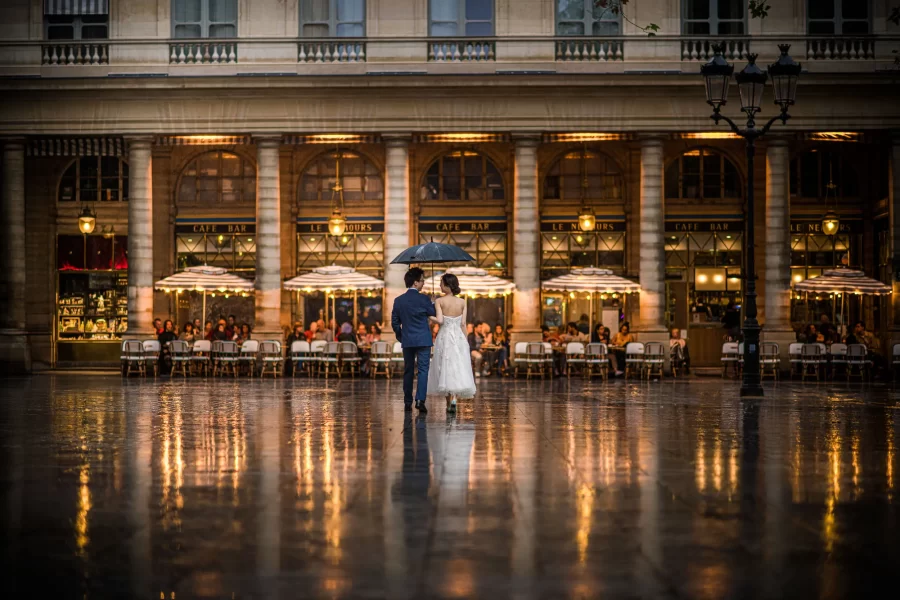
Chapter 8: My Post-Production Workflow in Wedding Photography
In wedding photography, post-production is as crucial as the shoot itself. My post-production setup is straightforward yet effective, ensuring that the final images are delivered with the highest quality.
Hardware: The Foundation of My Workflow
16-inch MacBook Pro with 32GB RAM: This is my primary tool for editing. Its performance is robust enough to handle large files and intensive editing tasks.
External Hard Drives: A collection of external hard drives is essential for storing and backing up the vast number of photos from each wedding. Now it’s the WD 4tb “passports” – they come in various colours, so it’s easy to identify them. Yes, labeling helps, but that’s just not me.
Cloud Storage and Online Galleries: I use Dropbox for cloud storage, which offers convenience and accessibility. For client galleries, I rely on ShootProof, which provides a professional platform for clients to view and select their photos.
Software: Lightroom and Photoshop
While some photographers prefer Capture One, I find the combination of Adobe Lightroom and Photoshop to be the most efficient for my needs. Lightroom offers powerful cataloging and initial editing capabilities, while Photoshop is great for more detailed retouching and creative edits. Then again – 90% of the work is done in Lightroom.
The Human: My Wife, the Retoucher
A unique aspect of my workflow is that I don’t retouch my photos. Instead, my wife, Inese, handles all the retouching. She’s not only better at it than I am, but she also manages the workload more effectively, thanks to her organizational skills. Her contribution is invaluable, and I want to extend a heartfelt thank you to Inese for all her hard work and dedication to making our photos look the way they do.

Chapter 9: My Advice on Selecting Wedding Photography Gear
When it comes to selecting equipment for wedding photography, my guiding principle is simple: prioritize quality over quantity. Here’s my take on how to choose the right gear.
Lenses: Start with the Essentials
My advice to budding wedding photographers is to invest in one high-quality lens rather than spreading your budget across several mediocre ones. A versatile lens like a 24-70mm f/2.8 can cover a wide range of scenarios. Over time, you can expand your collection with prime lenses like a 50mm f/1.4 or an 85mm f/1.4, but there’s no need to acquire everything at once.
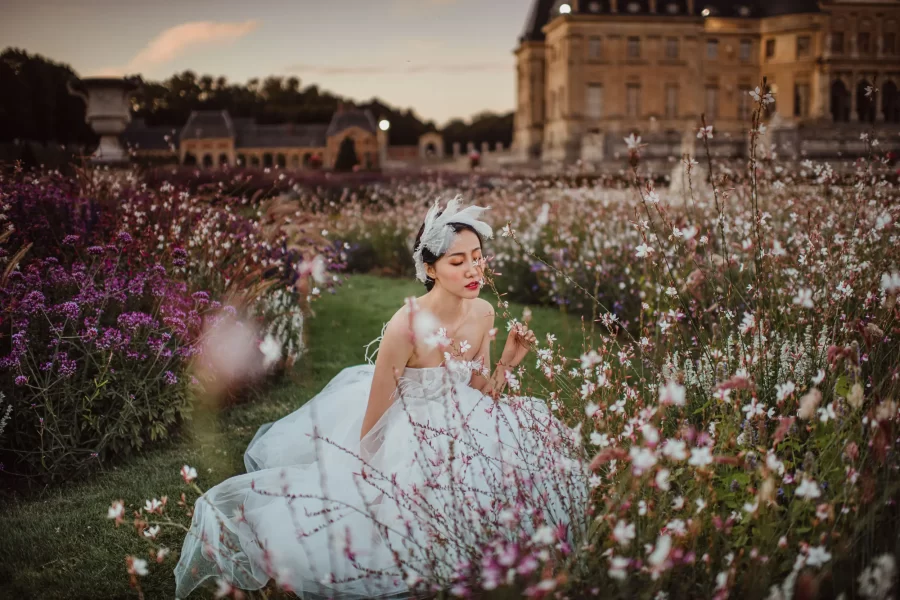
Cameras: Reliability is Key
Similarly, with cameras, it’s better to have one reliable and high-performing camera than multiple average ones. In my two decades of shooting weddings, I’ve rarely encountered camera failures. The few incidents I’ve had were due to physical damage, not mechanical failure. So, invest in a robust camera that can withstand the demands of wedding photography.
Style vs. Functionality
While some suggest choosing a camera based on your shooting style, I believe a camera should be versatile and capable of handling various scenarios. Your style might be slow-paced, but you never know when you’ll need to capture fast-moving moments. A camera’s speed and responsiveness are crucial.
Brand Preference: A Personal Choice
As for brands, I’ve been a loyal Nikon user for years. I appreciate Nikon’s reliability, lens selection, and color philosophy. Their Professional Services support has been invaluable, providing backup cameras and tools when needed. However, this is my personal preference based on my experiences. Other photographers might prefer Sony or Canon for whatever reasons. Ultimately, the choice of brand should align with the way you work.
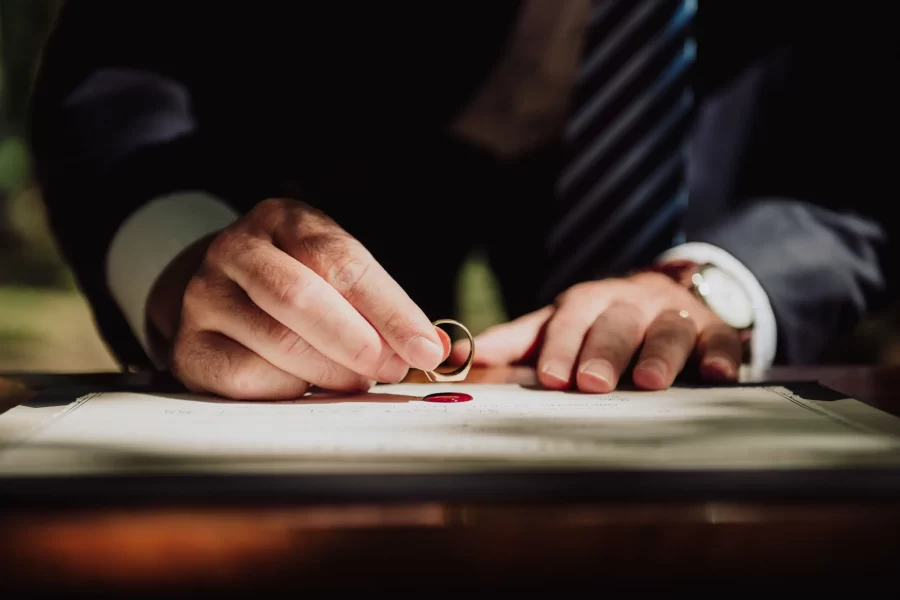
Conclusion: Balancing the Trifecta in Wedding Photography
As I wrap up this guide, I want to emphasize that the insights and advice shared are drawn from my personal journey and experiences in wedding photography. To me, the gear is undeniably essential, but it’s just one part of a crucial trifecta.
1. The Photographer: At the heart of every great wedding photo is the photographer. It’s our vision, skills, and creativity that breathe life into each shot. Our ability to connect with the subject, understand the environment, and bring out the best in every moment is what truly makes a difference.
2. The Subject: The couples, their families, and the unique moments that unfold during a wedding are what we aim to capture. Our subjects bring the emotion, the energy, and the stories that we strive to capture through our lenses.
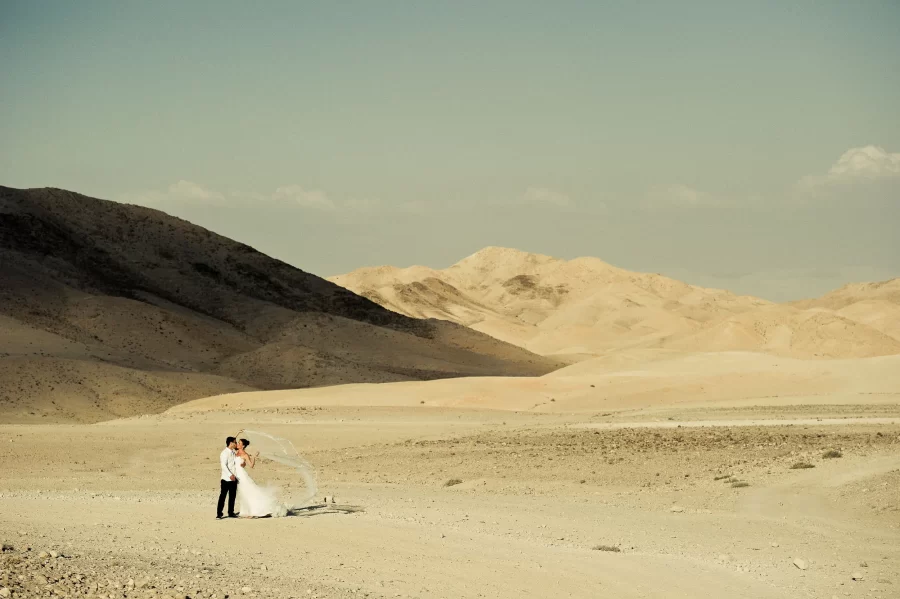
3. The Gear: While the photographer and the subject are paramount, the right gear plays a vital role. It’s the tool that helps us translate our vision into memories. My approach has always been to choose gear that complements my skills and enhances my ability to capture the essence of the wedding day.
In conclusion, while the gear is important, it’s the synergy between the photographer, the subject, and the equipment that creates truly memorable wedding photography. As wedding photographers, we have control over our skills and our gear. It’s our responsibility to hone the former and wisely choose the latter, ensuring we’re always ready to capture the beauty and spontaneity of each wedding day
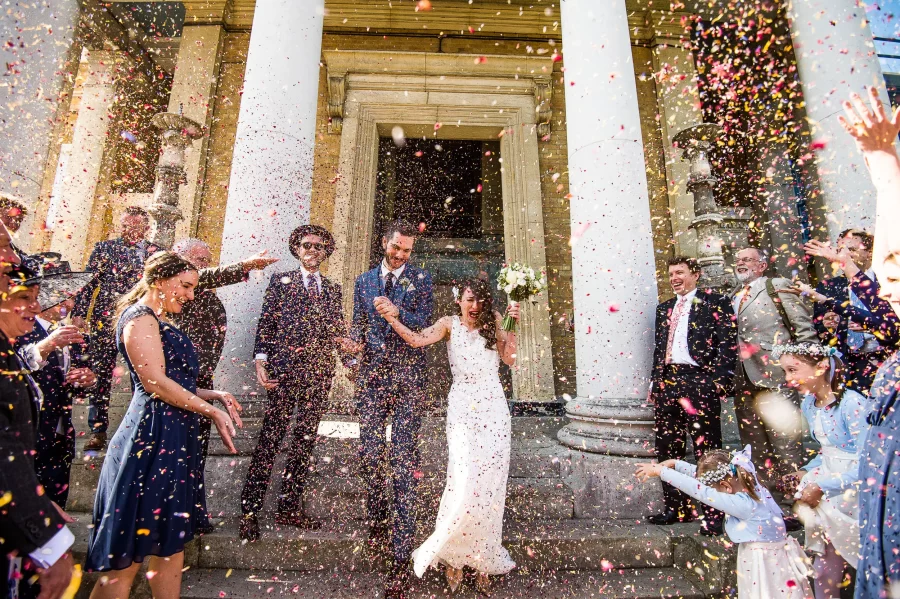
Connect and Elevate Your Wedding Photography
Join the Journey of Exceptional Wedding Photography
As you’ve journeyed through this guide, I hope you’ve found valuable insights and inspiration for your wedding photography endeavors. Whether you’re just starting or looking to refine your craft, remember that the right equipment, coupled with skill and passion, can elevate your work to new heights.
Are You a Budding Wedding Photographer?
If you’re on the path to becoming a wedding photographer, I’d love to hear from you. Share your experiences, your challenges, and your triumphs. Let’s connect and grow together in this beautiful art form.
Planning Your Big Day?
For those planning a wedding, I understand how crucial it is to capture every precious moment. If you’re looking for a photographer who blends expertise with the finest equipment to immortalize your special day, let’s talk. I’m here to bring your wedding day memories to life with the artistry and care they deserve.
Stay Connected for More Insights
Don’t miss out on future posts, tips, and updates. Follow me on Instagram and subscribe to my newsletter for the latest in wedding photography trends, techniques, and equipment reviews.
Let’s Create Magic Together
Whether you’re a fellow photographer or a couple in love, I’m excited to embark on this journey with you. Reach out to me at [email protected] or visit my website at www.janisratnieks.com for more information. Let’s create magic together!
Read more:

